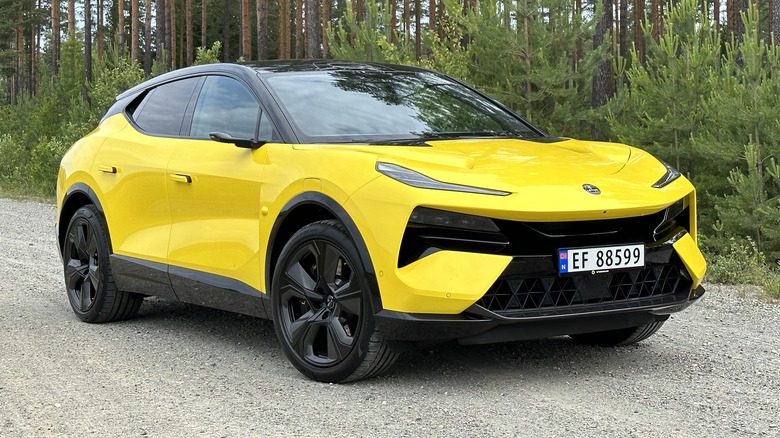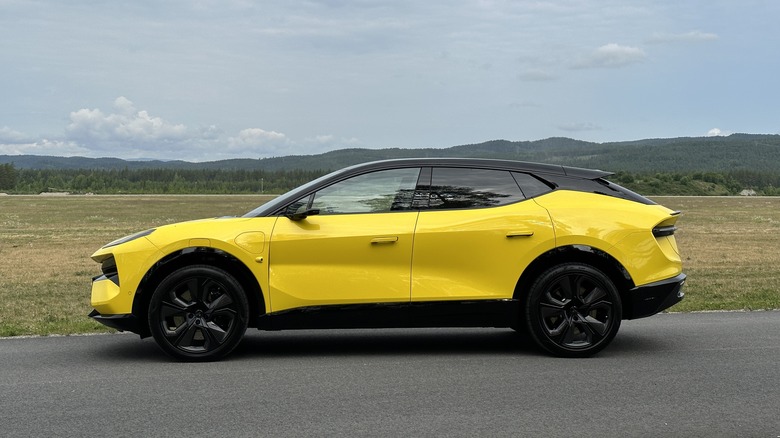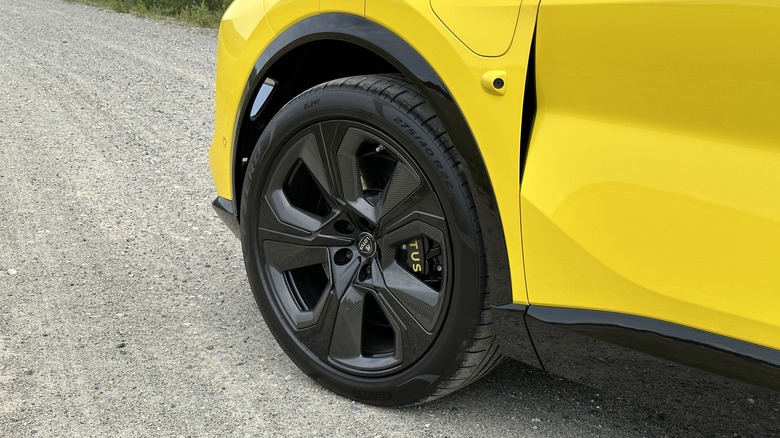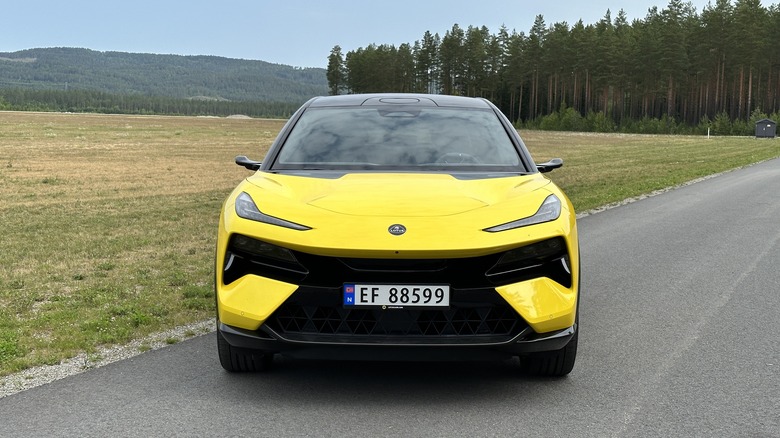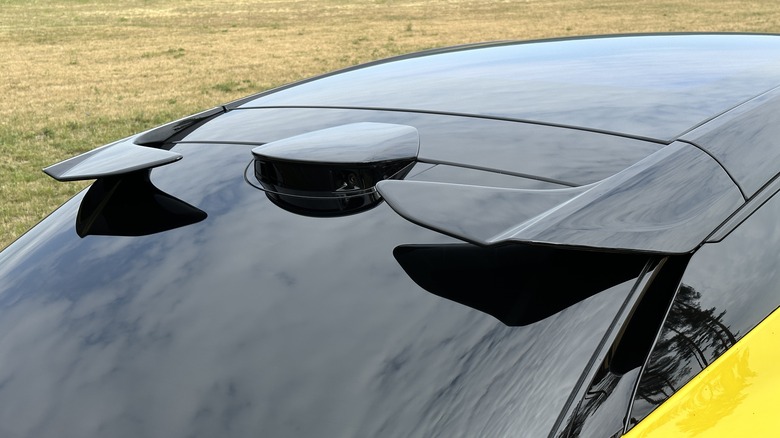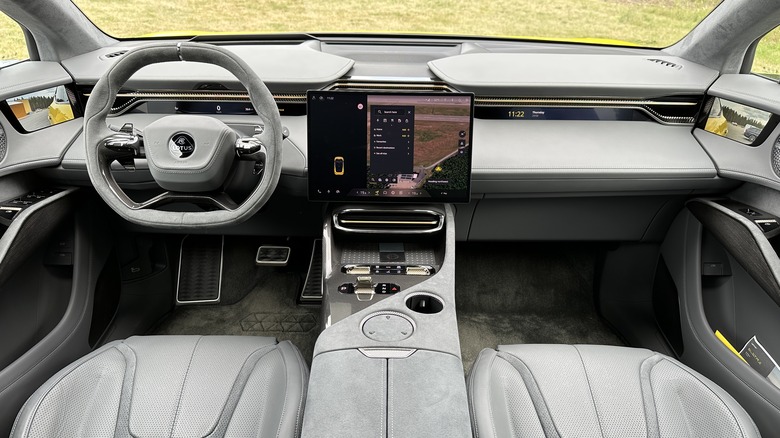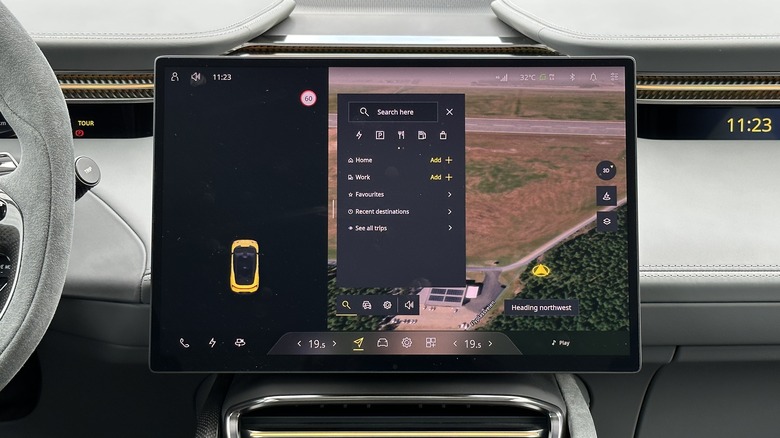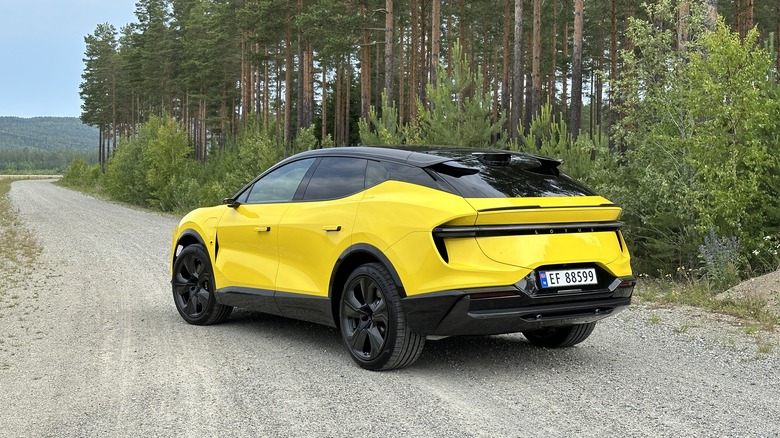2024 Lotus Eletre First Drive: Electric SUV Has An Eye On The Future
Close your eyes and picture a Lotus. Now tell me, does it look like a midsize SUV?
Yes, the mass-market reckoning has finally come for Britain's storied sports car maker. Parent company Geely — who also owns Volvo and Polestar — insists that, if Lotus wants to keep doing sporty little Lotus things, it needs to also embrace an electric future. And if you're going to launch a new EV in the year 2023, there's no better form factor than a five-passenger SUV.
A Lotus... SUV?
Yes, it's a pretty big departure from the company's past products, and there isn't much of a visual resemblance linking the Eletre to other Lotuses, either. The styling is bold, to say the least, and I think it works a lot better in vibrant colors like my test car's yellow. There are scoops and ducts everywhere, but everything works to make the Eletre as aerodynamic as possible. With a drag coefficient of 0.26, the Eletre is one of the world's most slippery SUVs.
Aiding that are 22-inch aero wheels, which you can see on this test car, finished in black with some faux carbon fiber trim. Larger 23-inch wheels are optional, which totally seem like overkill, and base 20s are available, as well. But I think the 22s strike a good balance with the overall shape of the Eletre. Just maybe don't get these black ones. There are better-looking silver options in Lotus' catalog.
Being an SUV, the Eletre has 7.6 inches of ground clearance and standard all-wheel drive, though the latter part really just refers to the EV's dual-motor powertrain. There's lots of space for hauling, with a maximum of 54.1 cubic feet in back if you fold the rear seats flat, and a tiny little frunk up front can carry an extra 1.6 cubic feet of stuff, too.
Powerful motors, powerful charging
The all-wheel-drive capability comes from the Eletre's standard pair of electric motors, one mounted at each axle. The motors are powered by a 112-kilowatt-hour battery pack, and in the base Eletre and uplevel S, output is rated at a healthy 603 horsepower and 524 pound-feet of torque. There's also the grandaddy Eletre R, which turns up the wick to 905 hp and 726 lb-ft, and according to Lotus, can accelerate to 62 mph in 2.9 seconds.
All of the Eletres can accept DC fast charging speeds of up to 350 kilowatts, which is impressive, allowing the battery to go from a 10-percent to 80-percent state of charge in just 20 minutes. As for range, official US numbers are not yet finalized, but Lotus expects the base and S versions to do 373 miles on a charge, according to the ever-optimistic European WLTP test regiment. The more powerful Eletre R, however, reduces that number to just 304 miles. That's a big difference.
As for actually hitting the throttle and launching the Eletre, the experience isn't quite as abrupt and thrilling as you might expect from a high-performance EV. There's no immediate thrust of torque, instead it builds progressively, like a sports car with a gas engine. The Eletre R's 2.9-second 0-to-62 time is certainly quick, but it doesn't feel that quick on the road. Weird.
A nicely balanced chassis
The Eletre's ride and handling are both appropriately tuned for a midsize electric SUV, though I wasn't exactly able to push this thing on the roads around Oslo, Norway, which are rife with speed cameras and slow-moving traffic. There's an adaptive air suspension system to keep things comfortable and steady while you're cruising, and standard 48-volt anti-roll technology prevents unwanted body motions from ruining your cornering composure. I'm eager to get the Eletre out on a fast, winding road to really see if there's some core Lotus verve baked into its chassis.
The suspension will lower itself at freeway speeds to improve aero, and a large rear spoiler comes off the back hatch to improve airflow, as well. The spoiler is... kind of ungainly, but at least there's function to its form. At 68 mph, it opens to its first position, and then at 100 mph it goes even higher, providing some 247 pounds of rear downforce at this speed. The underside is actually curved for lower wind resistance, too. Every bit helps.
Regenerative braking aids in efficiency, too, and the Eletre has four levels of recuperation, activated by pulling the left paddle on the steering wheel. The highest level won't give you full one-pedal stopping, but it's still somewhat aggressive when you initially lift off the throttle, so I tend to keep it on levels two or three for the best results. Or just turn it off. You do you.
Future autonomy, but problems now
Every Eletre is equipped with lidar sensors that Lotus says preps this car for eventual autonomous integration, whenever that might be. In the meantime, you can hear the roof-mounted lidar — it's up front by the windshield — moving up and down from inside the cabin, as this still houses some of the sensors used for currently available technologies like adaptive cruise control. The rear lidar, pictured above, always stays where it is.
On that note, Lotus could really stand to refine the operation of its adaptive cruise. The Eletre is prone to quick jolts of power when speeding up, followed by hard braking applications, like it has a hard time actually placing the location of the lead car.
Other driver-assistance systems — like the lane-keeping assist, speed limit warnings (so many in Norway!) and blind-spot monitoring — are somewhat overprotective, but nevertheless useful.
Wow, what a nice interior
Putzing along in Norwegian traffic gives me lots of time to fiddle with the Eletre's interior, and you know, it's really quite lovely. There are lots of interesting textures — including something that sort of looks like wood combined with snake skin? — and real metal pieces of switchgear. The leather seats are nice, and the suede fabric is soft, though I'd personally stay away from one of these with the Alcantara steering wheel. That's gonna be so gross after a year of sweaty palms.
Lots of little details make the Eletre's cabin impressive. I like how the electrochromic roof can be brightened or dimmed though the central control screen, but there's also an automatic setting that'll adjust it for you depending on how bright it is outside. The head-up display is big and packs lots of information, though it'd be nice if turn-by-turn navigation directions could make their way in here, too. The KEF/Dolby Atmos stereo is also really something, though you can't adjust any of the audio controls (bass, treble, fade, balance) manually, which is a dumb bit of "we know better than you" gatekeeping.
A quick word about the camera mirrors: They work well and are easy to get used to, but they won't be coming to the US. Our car will have the traditional chunky mirrors you're already familiar with. Maybe someday we'll catch up to the rest of the world.
Hey, the tech's good, too
The driver and passenger each have 12.7-inch screens — though they're more like horizontal slats, honestly — showing different information. For the driver, this acts as the traditional gauge cluster, with speed, battery information, driver-assistance systems, etc. For the passenger, you get a little display that shows the date and time, or the audio information, and that's it. You can turn the screen on or off, or skip through the audio tracks, but this passenger display does not have the same functionality as something like a Jeep Grand Cherokee or Porsche Taycan.
In the middle of the dash, there's a 15.1-inch display that runs the main infotainment system, along with the vast majority of the vehicle's controls (including the direction of the vents, which is stupid). Processing power comes from Epic Games' Unreal Engine, so there's absolutely no lag to inputs, the graphics are super crisp, and you can drag and swipe to your heart's content without overloading the system. Apple CarPlay and Android Auto are no-gos for now, however.
Arriving in 2024
Lotus has yet to release US pricing for the Eletre, but I have a hunch it'll start right around $100,000 when it goes on sale in 2024. The S should command a little more — say, $120,000 — and the R will add even more to that, likely hitting around $150,000. Right now, the competitive set is pretty slim, limited to cars like the BMW iX M60 and Mercedes-AMG EQE SUV, but surely more will arrive by the time the Eletre hits dealers.
On that note, Lotus dealers are pretty scarce, and the company says it's ramping up its efforts to have a better sales and service network in the US. That'll be hugely necessary if the company wants the Eletre to be successful, to say nothing of its future electric endeavors. That's right, an SUV is only the beginning.
